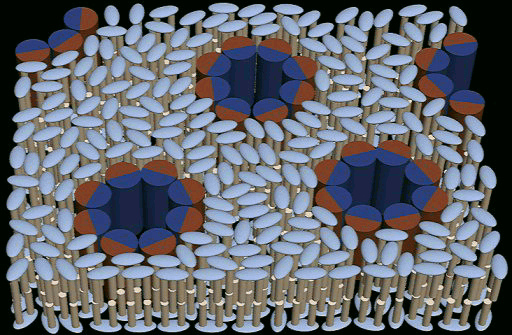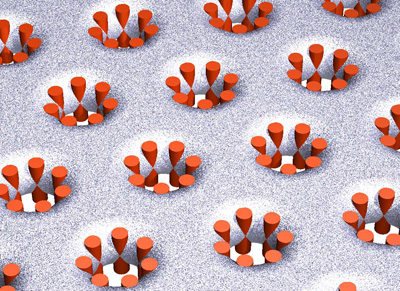|
| |
Huey W. Huang - Sam and Helen Worden Chair Professor
Department of Physics & Astronomy - Rice University
hwhuang@rice.edu - phone: 713-348-4889 - fax: 713-348-4150
 |
|
Observation of Pores


K. He, S.J. Ludtke, D. L Worcester, H. W. Huang, , "Antimicrobial Peptide Pores in Membranes Detected by Neutron In-plane Scattering" Biochemistry 34,15614-15618 (1995).
K. He, S.J. Ludtke, D. L Worcester and H. W. Huang, "Neutron Scattering in the Plane of Membrane: Structure of Alamethicin Pores," Biophys. J. 70: 2659-2666 (1996).
S. J. Ludtke, K. He, W. T. Heller, T. A. Harroun, L. Yang and H. W. Huang, "Membrane pores induced by magainin," Biochemistry 35: 13723-13728 (1996)
L. Yang, T. A. Harroun, W. T. Heller, T. M. Weiss, and H. W. Huang, “Neutron off-plane scattering of aligned membranes I.Method of measurement,” Biophys. J. 75: 641-645 (1998).
L. Yang, T. M. Weiss, T. A. Harroun, W. T. Heller, and H. W. Huang, “Supramolecular Structures of Peptide Assemblies in Membranes by Neutron Off-plane Scattering: Method of Analysis” Biophys. J. 77:2648-2656. (1999)
L. Yang, T. M. Weiss, and H. W. Huang, “Crystallization of antimicrobial pores in membranes: Magainin and protegrin,” Biophys. J. 79: 2002-2009 (2000)
L. Yang, T. A. Harroun, T. M. Weiss, L. Ding and H. W. Huang, “Barrel-stave Model or Toroidal Model? A Case Study on Melittin Pores,” Biophys. J. 81: 1475-1485 (2001)
|
|
|
